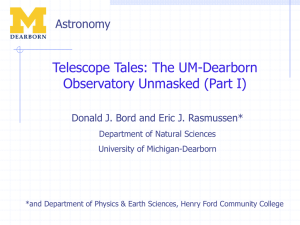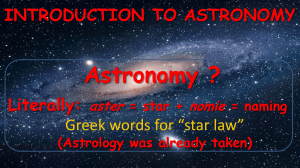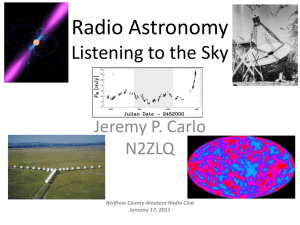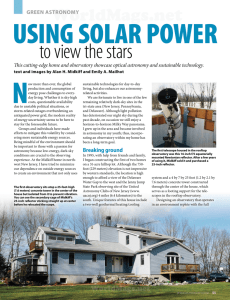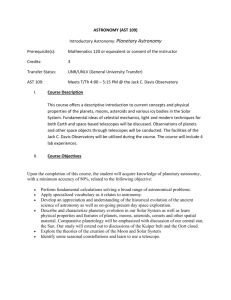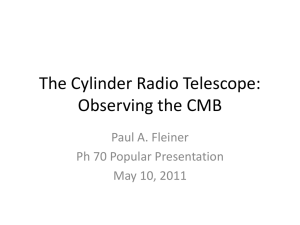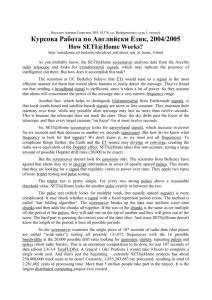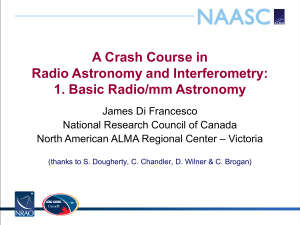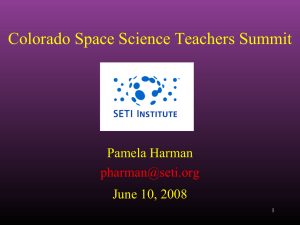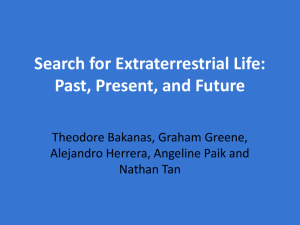campare 2012-13 - California State University, Los Angeles
advertisement
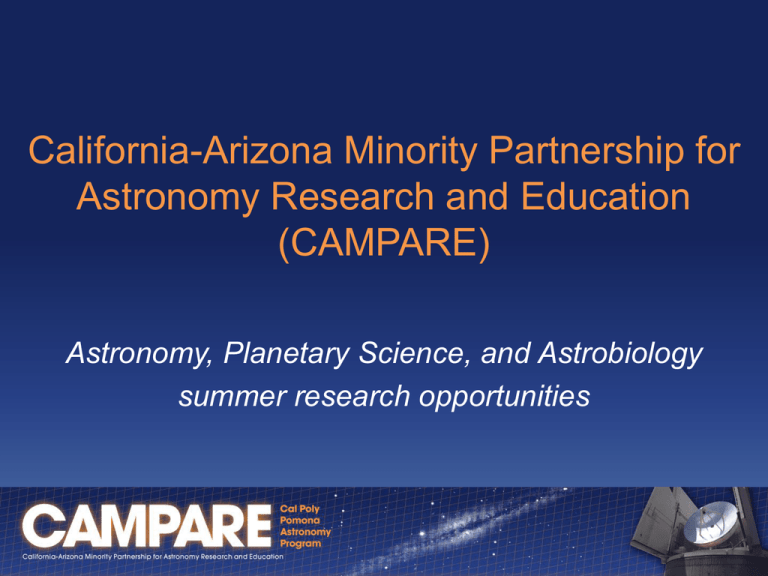
California-Arizona Minority Partnership for Astronomy Research and Education (CAMPARE) Astronomy, Planetary Science, and Astrobiology summer research opportunities CAMPARE opens up a world of possibilities CAMPARE: What is it? • Paid 10-week summer internships • Housing and travel costs included • Research areas include: Astronomy, Planetary Science, Astrobiology • Sites include: University of Arizona Steward Observatory, SETI Institute, JPL/Caltech CAMPARE: Where is it? CAMPARE: Research projects SETI Institute • • • • IR spectroscopy of ethane and ethane-water mixtures Dark slope streaks on Mars Meteor showers and their parent comets SETI and radio astronomy University of Arizona Steward Observatory • • • • JPL/Caltech IR variability of proto-planetary disks Molecular cloud mapping with the Arizona sub-millimeter telescope Observations of young stars in the Carina Nebula Astronomy camp/astronomy education research • Morphology of Titan dunes • Studies of main belt asteroids • Planetary atmospheres outside the Solar System Studies of Main-Belt Asteroids • Mario’s project was entitled “WISE/NEOWISE Post-Cryogenic Main-Belt Asteroid Data Analysis” • His project was to determine the accuracy of the post-cryogenic data for the main-belt asteroids, working with the NEOWISE team led by the Dr. Amy Mainzer and Dr. Joe Masiero. Mario Cabrera, Physics major Worked at JPL/Caltech OREOcube experiment on the ISS • Jason Alonzo is an Electrical Engineering major pursuing a minor in Physics • His mentor was Dr. Richard Quinn of SETI, and his research was conducted at NASA Ames Research Center: Astrobiology Institute (NAI) • He worked on OREOcube, an astrobiology experiment destined for the International Space Station • His project was to develop various sample cells of organic and inorganic materials to study chemical reactions while exposed to a space environment Jason preparing the Deposition System with SiO2 optical window for the organic sublimation procedure. Studies of the M17 Molecular Cloud • Natalie Nicole Sanchez is a Physics major • She worked at the Steward Observatory in Tucson, Arizona this past summer • Her mentor was Dr. John Bieging of the University of Arizona. • Her project was to reduce raw data from the Heinrich Hertz Submillimeter Telescope into three dimensional data maps of the M17 molecular cloud • The image to the right shows the M17 molecular cloud at its brightest velocity Natalie next to the Submillimeter Telescope (SMT) on Mt. Graham in Arizona SETI: Software Development at the ATA • Aaron is an Electrical Engineering pursuing a minor in Physics/Astronomy. • His mentor was Dr. Gerry Harp, Director of Center for SETI Research at the SETI Institute, Mountain View, CA. • Project included several individual projects to develop software for the Allen Telescope Array (ATA). Aaron with 3 of 42 antennas of the Allen Telescope Array (ATA). Hat Creek Radio Observatory. July 2012. CAMPARE: Who has participated? 20 students from seven different majors have participated in CAMPARE: • Physics, Geology, Biology • Aerospace, Computer, Electrical, and Mechanical Engineering CAMPARE: Where are they now? 8 participants have graduated since CAMPARE began; their pursuits include: • Graduate training • Teaching career • NASA internship • NUPOC program, US Navy Student Major Post-graduation activities/plans Amber Butcher Geology PhD program, Department of Earth Sciences, USC Ashley Curry Biology Applying to PhD programs in Biology Clint Hawkins Physics Nuclear Propulsion Officer Candidate Program (NUPOC), U.S. Navy Steven Jasso Physics High school physics teaching credential program, CPP Courtney Lemon Physics PhD program, Department of Physics, Florida State University Hector Saldivar Physics Engineering job or high school physics teaching credential program Steffi Valkov Aero Internship, NASA Academy, NASA Dryden Flight Research Center, Edwards AFB Stephanie Zajac Physics MS program in astronomy instrumentation, SUNY Stony Brook CAMPARE: Presentations at national meetings Students present at national meetings such as the American Astronomical Society (AAS) meetings in Seattle, Austin, and Long Beach and at the American Geophysical Union meetings in San Francisco Stephanie Zajac (above) was selected as one of the winners of the Chambliss Astronomy Achievement Student Award competition, “given to recognize exemplary research by undergraduate students who present posters at the semi-annual AAS meetings” CAMPARE: Who can apply? Anyone can apply! The only requirements are : • Complete freshman physics before the summer • Don’t graduate before the summer Application materials are: • On-line application, including personal essay • Transcript • 2 letters of recommendation Applications are due February 1, 2013 Visit: www.csupomona.edu/~astronomy for more information alrudolph@csupomona.edu


